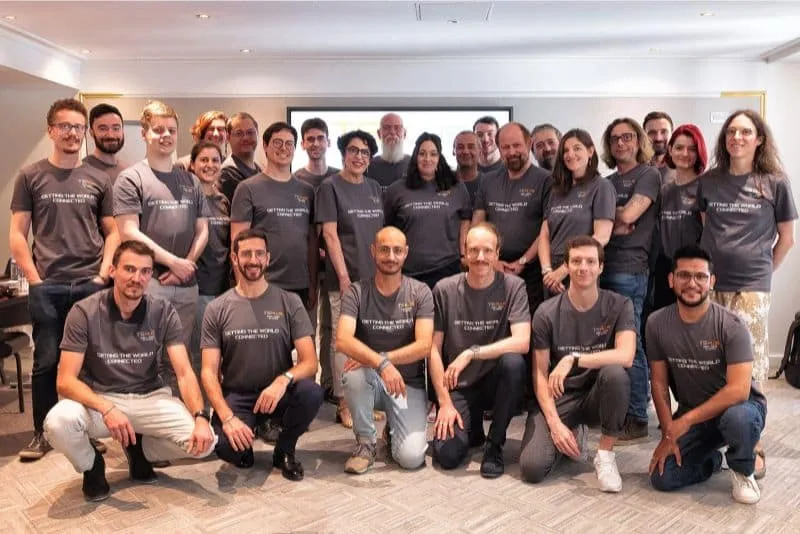"How to Migrate an Application to the Cloud"
In this article, we’ll explore the best practices, strategies, and key considerations to ensure a successful cloud migration.
Would you like to see the site in a different language?
TSPLUS BLOG
Google Remote Desktop (GRD) is widely used in the IT community for its convenience and integration with Google services. However, as cybersecurity threats evolve, it's crucial to assess whether GRD meets the high security standards required in professional environments. This article provides a technical examination of GRD's security mechanisms, potential vulnerabilities, and best practices to secure remote access sessions.
)
Google Remote Desktop (GRD) offers a streamlined way for users to access their computers remotely, leveraging Google's advanced infrastructure to ensure secure and efficient connectivity. This section explores the key security mechanisms employed by GRD to protect data and maintain user privacy.
TLS (Transport Layer Security): GRD utilizes TLS to encrypt the data that travels between the remote and host machines, effectively shielding it from potential interception by unauthorized parties. This protocol ensures that all data remains confidential and integral during transmission.
AES (Advanced Encryption Standard) 256-bit encryption: Alongside TLS, GRD incorporates AES 256-bit encryption, which is a robust encryption standard used widely in various security-driven applications, including online banking and government communications.
GRD enhances security through several authentication measures:
PIN Authentication: Each session requires a randomly generated PIN, which users can set to expire after each session. This feature prevents residual access following session closure and ensures that each session remains secure.
Two-Factor Authentication (2FA): Users have the option to enable 2FA for their Google accounts, which adds an additional layer of security. This method requires not only the account password but also a second factor, typically a code sent to a mobile device, thereby reducing the risk of unauthorized access.
The integrity of a GRD session largely depends on the security of the user's Google account:
Account Security Best Practices: Users are advised to use strong, unique passwords and to enable two-factor authentication to protect their accounts. Regularly monitoring account activities can help detect and prevent unauthorized access attempts.
By understanding and implementing these security measures, users can significantly enhance the security of their Google Remote Desktop sessions, ensuring that their remote access is both effective and secure.
Despite the robust security framework of Google Remote Desktop (GRD), certain scenarios and threats can heighten risks, necessitating vigilant risk management and proactive security practices to safeguard remote sessions effectively.
Preventive Measures against Session Hijacking: Session hijacking involves an attacker taking over a web session in the midst of communication between two systems. To combat this, ensure that all session tokens are encrypted, and sessions are timed out after a period of inactivity, thereby minimizing the window for unauthorized access.
Phishing Awareness and Response: Phishing attacks, where users are deceived into disclosing personal or financial information, can be mitigated by:
Enhancing Physical Security:
Securing Network Connections:
By strengthening these aspects of security, organizations can minimize the vulnerabilities associated with remote desktop operations and ensure a safer remote work environment.
As organizations increasingly rely on remote access solutions, it's crucial to adopt advanced security features that go beyond standard practices. These features enhance security measures for sensitive environments where data integrity and privacy are paramount.
Curtain Mode for Windows: This specialized feature enhances privacy by hiding the remote desktop screen from the local display during a remote session. It displays a lock screen on the local monitor, ensuring that sensitive information is visible only to the remote user. This is particularly useful in open office environments or where multiple users share the same physical workspace.
Session Logs: Maintaining comprehensive logs of all remote sessions provides a detailed audit trail that can be invaluable for forensic analysis and compliance reporting. These logs should capture key data such as session start and end times, duration, user IDs, and IP addresses.
Configurable Alerts: Setting up real-time alerts for unusual activities during remote sessions can significantly aid in the early detection of potential security breaches. Alerts can be configured based on anomalies such as unauthorized access attempts, deviations from typical usage patterns, or connections from suspicious locations.
By integrating these advanced features, organizations can significantly fortify their remote desktop environments against sophisticated threats, ensuring that their operations remain secure and compliant with industry standards.
TSplus Advanced Security provides comprehensive security features designed to protect remote desktop environments from sophisticated threats. It includes Homeland Protection, which restricts access based on geographical location, and Brute Force Defender, which prevents repeated unauthorized attempts to connect. Ideal for businesses needing robust security measures, our solution integrates seamlessly, safeguarding remote desktop activities from the evolving landscape of cyber threats.
While Google Remote Desktop provides essential tools for remote access with significant built-in security features, leveraging advanced security solutions like TSplus Advanced Security can provide the enhanced safeguards needed by IT professionals. By adopting best practices and employing additional security measures, organizations can effectively mitigate the inherent risks of remote desktop access, maintaining integrity and confidentiality in remote operations.
Simple, Robust and Affordable Remote Access Solutions for IT professionals.
The Ultimate Toolbox to better Serve your Microsoft RDS Clients.
 Get in touch
Get in touch